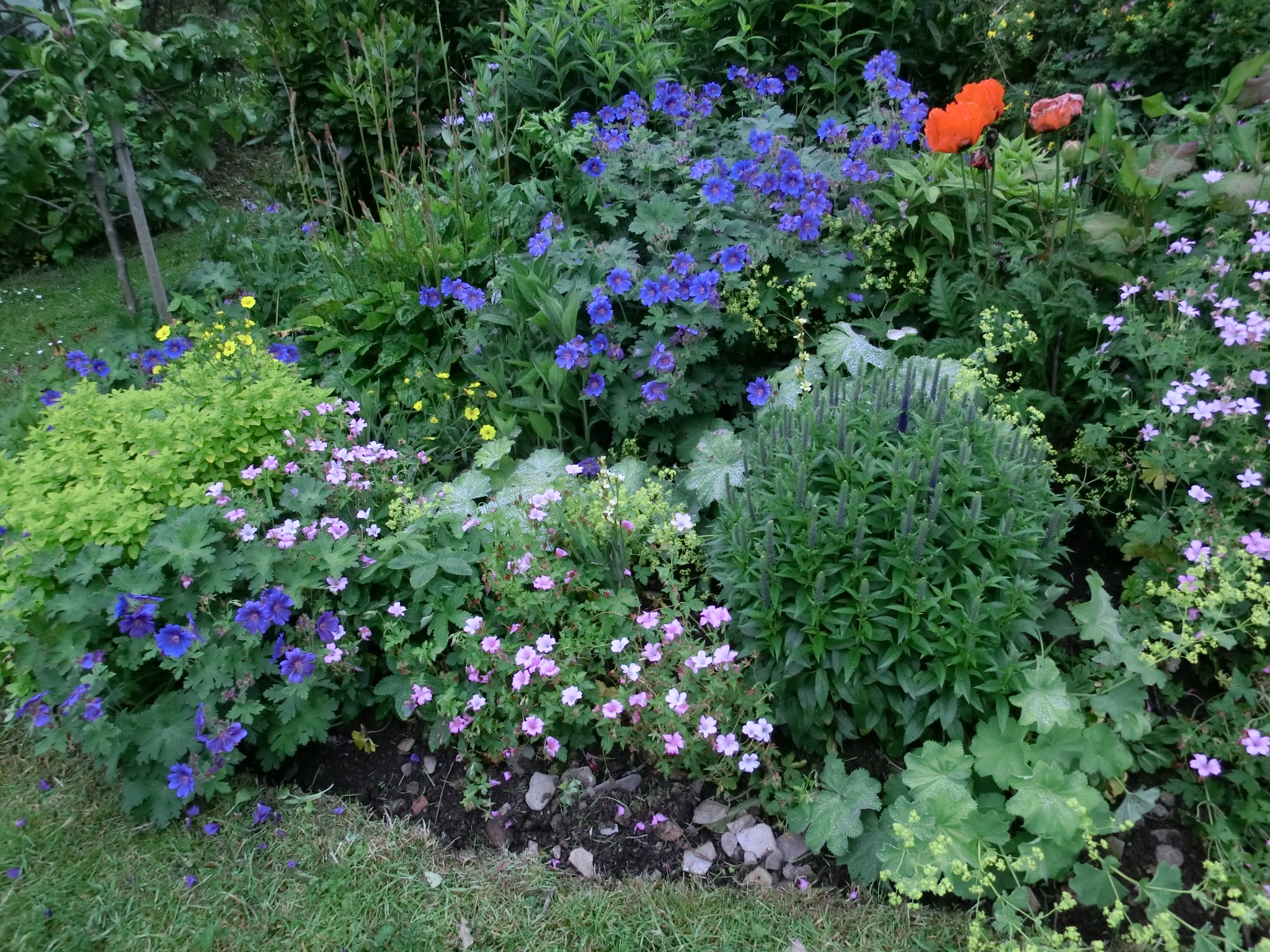July jobs in the garden
July jobs in the garden are a mix of enjoying your garden with feet up in the sunshine (in our dreams?), holding back the tide of fast growing weeds and grass, and a chance to make the most of your plants and prolong their summer show.
Deadheading
We know you know, we told you in a previous blog, and here we go again. Removing dead flowers from flowering plants stops the plant forming seeds. That encourages more flowers, and that makes the most of your plants and your time.
(And it looks tidier too).
June and July evenings in my London garden were a peaceful time, snipping with secateurs, and then relaxing in a comfortable garden chair. Depending on where you live, you might be doing that now, because the flush of wonderful early summer flowers is over. In cooler areas the flowers may be well underway and you are enjoying them. Or - like me - the garden has a bit of both. Whatever and wherever – pick up a pair of secateurs and get ready for action.
One of my favourites among the June and July flowering plants is the repeat flowering geranium – the real geranium not the heat loving pelargonium that I hope is a WOW in your pots and on your windowsill. Geraniums are a definite July job in the garden. They need you now, or very soon.
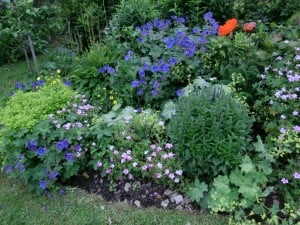
Geraniums are the star of summer gardens. Deadheading encourages a second show later in the summer. Sarah Buchanan
Once the flowers are over, the plant starts to look as if it is over too. Cut the stems that flowered back to a node (see my picture below) near the ground. Compost the stems and leaves (need some advice on that? We've got it here for you).
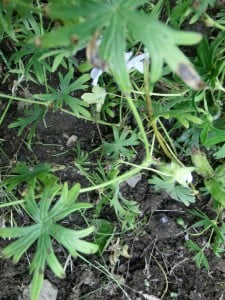
Deadheading geraniums: cut between the soil and a node (looks a bit like an elbow) on the stem, about 10 cm above the ground.
The plant will look a bit shocked and edgy for a week or two, but then will grow with gusto to reward you with a second round of flowers later in the summer.
Deadhead roses
A bucket and a good pair of secateurs is all you need for this restful and rewarding July job. Roses, you know from our blogs, are another of our favourite summer flowers. Deadheading means you can keep summer going into the autumn! Not all roses will flower again but it does no harm to deadhead them all. Make a diagonal cut between the dead flower head and a junction with a leaf or stem and that will mean, for most roses, more flowers. Keep doing it and you will have roses into the autumn.
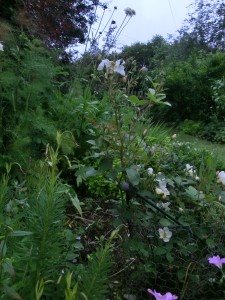
Deadheading rose 'Kew Gardens' will encouarage almost continuos flowering through the summer. Such a pretty rose - and thornless! Sarah Buchanan
Deadhead other flowering plants
Apart from roses and flowering shrubs including rhododendrons, a rule of thumb on deadheading is to remove not only the dead flower but the stem that held it. So you are providing a haircut too. Many will flower again, and all will reward you by looking their best. Aren’t plants wonderful?
Successional sowing salad leaves, again
We’ve told you this in a blog before, but a good message is worth repeating (again!) If you want to eat home grown salad leaves through the summer, sow seeds on a regular basis. My Dad’s approach was to extend his row of lettuce (we didn’t have ‘leaves’ back then, just different varieties of lettuce) by about 30cm after the last seeds had grown into seedlings. He did the same for radishes.
In this way he kept a straight line of plants and we enjoyed salads all through the summer. I am more haphazard. But I do sow about 30cm of mixed salad leaves, every few weeks, wherever I have a place for them.
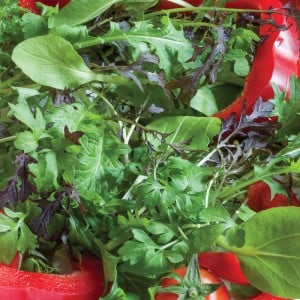
Successional sowing of salad leaves or lettuce to ensure a steady supply. Thompson & Morgan seed packet at the ready!.
At this time of year slugs and snails (and a large dog’s footprints) are a challenge to young seedlings. And they seem to love salad. So I am using some of Dad’s techniques and some more modern ones – read our recent blog to find out what to do to keep your leaves for your table.
The main thing is to keep sowing and to protect your seedlings so you are ready for those lazy hazy summer garden salad lunches – bring it on!.
Sign up for our emails below, so we can send you blogs on gardening tips, as well as updates on our sales, so you don’t miss out on those garden furniture bargains!


